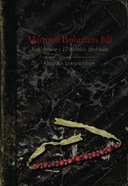Explore

En sommardag i Stockholm 1747 står snickarmästarens dotter Lena Cajsa Bohman inför rätta för olydnad mot sin far. Snart erkänner hon allvarligare brott. En härva av handel med unga flickor kring kopplerskan Lovisa von Plat rullas upp. Det utvecklar sig till en historia om makt och girighet, om hemliga nätverk och köpslående på jungfruburar och horbaler. Protokollen berättar om kvinnors villkor i en tid då all utomäktenskaplig sexualitet var förbjuden och ordet prostitution inte användes.
I 1700-talets stad gjordes ingen åtskillnad mellan prostitution och utom- eller föräktenskaplig sexualitet. Allt könsumgänge utom äktenskapet var olagligt för både kvinnor och män. Genom kombinationen av en mångfald källor, från rättegångsprotokoll till memoarer och hatiska hordikter, får vi en mångsidig bild av tidens kommersiella sexualitet. Materialet berättar om hur handeln organiserades, vilka kopplarna, säljarna och de köpande männen var, var i staden handeln ägde rum och hur kvinnor som försörjde sig på ”otukt” betraktades.
Det övergripande syftet är att undersöka hur horstigmat består över sekler, trots omvälvande sociala, ekonomiska och kulturella omvälvningar. Stigmat är oerhört anpassligt och ackommoderar sig ständigt efter nya kulturella och sociala sammanhang, lagar, värderingar och etablerade sanningar. Det är sammanflätat med dominerande föreställningar om gott och ont, om hedervärt och föraktligt.
Horstigmat var under 1700-talet ännu inte kopplat till betalning för sex. Det kunde drabba alla kvinnor, men var genomkorsat av andra hierarkiska samhällsordningar. Trots en rigid juridisk hållning och en stark social kontroll var gränserna mellan mer glidande och genomsläppliga än vad de senare skulle komma att bli. Det fanns en påfallande diskrepans mellan lag, rättspraxis och pöbelns dom i 1700-talets Stockholm – en stad där borgardottern Lena Cajsa Bohman kunde erkänna umgänge med kopplerskan Lovisa von Plat och en rad illegitima sexuella förbindelser, men klara sig undan straff och gifta sig in i aristokratin.
***
One summer day in Stockholm in 1747, the carpenter's daughter Lena Cajsa Bohman faces trial for disobedience to her father. Soon, she admits to more serious crimes. A tangle of trafficking of young women is revealed. It develops into a story of power and greed, of secret networks and trade with young women. The protocols reflects women's circumstances in a time when all extra-marital sexuality was forbidden and the word prostitution was not used.
In 18th century Stockholm, no distinction was made between prostitution and extramarital sexuality. All sexual intercourse outside of marriage was illegal for both women and men. Through the combination of a variety of material sources, from trial protocols to memoirs and hateful whore poems, we get a versatile picture of the commercial sexuality. The testimony of mamsell Bohman tells about how the trade was organized, who the profiteers, the women and the buying men were, where the trade took place and how women who provided sex för money were looked upon.
The overall aim is to investigate how the whore stigma remains over centuries. The stigma is extremely adaptable and constantly accommodates to new cultural and social contexts, laws, values and established truths. It is intertwined with dominant notions of good and evil, of honor and contempt. During the 18th century, the whore stigma was not yet linked to payment for sex. It could affect all women, but was crossed by other hierarchical social orders. Despite a rigid legal stance and a strong social control, the boundaries were more permeable than they would later become. There was a striking discrepancy between law, jurisprudence and the verdict of the mob in 18th century Stockholm - a city where the bourgeois daughter Lena Cajsa was able to admit to relations with the notorious Lovisa von Plat and a number of illegitimate sexual relations, but escape punishment and marry into nobility.
Academic co-ordinator is Birgitta Svensson, Professor, Ethnology, Stockholm University: https://orcid.org/0000-0003-1684-8295
This book is included in DOAB.
Why read this book? Have your say.
You must be logged in to comment.
Links
DOI: 10.33819/kriterium.17web: http://www.kriterium.se/site/books/10.33819/kriterium.17/
Editions

